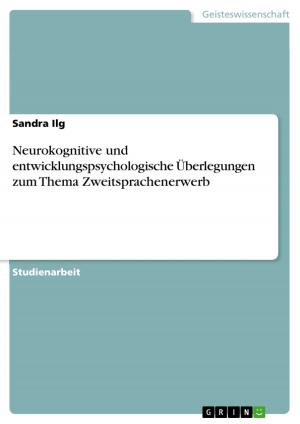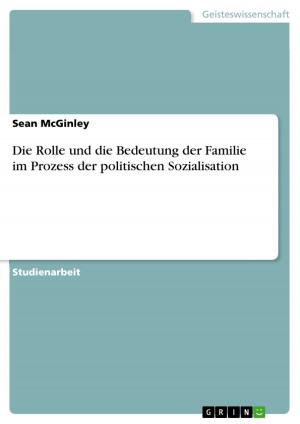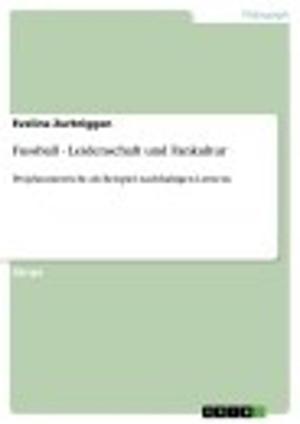| Author: | Anastasia Deibert | ISBN: | 9783638068604 |
| Publisher: | GRIN Verlag | Publication: | June 24, 2008 |
| Imprint: | GRIN Verlag | Language: | English |
| Author: | Anastasia Deibert |
| ISBN: | 9783638068604 |
| Publisher: | GRIN Verlag |
| Publication: | June 24, 2008 |
| Imprint: | GRIN Verlag |
| Language: | English |
Seminar paper from the year 2007 in the subject English Language and Literature Studies - Linguistics, grade: 1,7, University of Stuttgart (Institut für Linguistik/ Anglistik), course: Code Switching, 7 entries in the bibliography, language: English, abstract: In the following pages I want to focus on the code switching of Russian-German bilinguals. The phenomenon of code switching has its origin in the research of bilingualism and code switching can be examined from different perspectives. There are grammatical or syntactic, sociolinguistic or pragmatic, conversational and psycholinguistic aspects of code switching. In which situations is code switching possible or probable? Where does code switching seem to be possible syntactically? Why do speakers code-switch? Do bilingual speakers behave in another way in different social situations? Firstly, I will give some definitions of the term 'code switching' and I will define the various types of code switching. In addition, I will concentrate on Shana Poplack's grammatical constraints and on Carol Myers-Scotton's Matrix and Embedded Language theory. The next chapter will deal with my case study. First of all, I will name some relevant characteristics of Russian and then the procedure of the case study will be presented. Afterwards, while analysing my collected data I will try to find similarities as well as differences with regard to Poplack's and Myers-Scotton's theories and I will take a look at the functions of code switching. The conclusion will comprise the main points and some suggestions for further discussion. Up to now many researches on code switching were undertaken. As a consequence, various definitions and types of code switching can be found throughout the history of research on code switching. In this chapter I will concentrate on two of the major theories of code switching - on Poplack's and Myers-Scotton's code switching theories. Code switching is the term for different languages coming into contact with one another in a conversation. This could be a general definition for code switching. Bilingual or multilingual speakers, people who possess two or even more languages, normally tend to code-switch, that means that they change from one language to the other and use words and phrases from distinct languages. According to Wei (2000, 16) code switching occurs 'when a bilingual talks to another bilingual with the same linguistic background and changes from one language to another in the course of conversation'. Poplack (2000, 224) defines code switching as 'the alternation of two languages within a single discourse, sentence or constituent'.
Seminar paper from the year 2007 in the subject English Language and Literature Studies - Linguistics, grade: 1,7, University of Stuttgart (Institut für Linguistik/ Anglistik), course: Code Switching, 7 entries in the bibliography, language: English, abstract: In the following pages I want to focus on the code switching of Russian-German bilinguals. The phenomenon of code switching has its origin in the research of bilingualism and code switching can be examined from different perspectives. There are grammatical or syntactic, sociolinguistic or pragmatic, conversational and psycholinguistic aspects of code switching. In which situations is code switching possible or probable? Where does code switching seem to be possible syntactically? Why do speakers code-switch? Do bilingual speakers behave in another way in different social situations? Firstly, I will give some definitions of the term 'code switching' and I will define the various types of code switching. In addition, I will concentrate on Shana Poplack's grammatical constraints and on Carol Myers-Scotton's Matrix and Embedded Language theory. The next chapter will deal with my case study. First of all, I will name some relevant characteristics of Russian and then the procedure of the case study will be presented. Afterwards, while analysing my collected data I will try to find similarities as well as differences with regard to Poplack's and Myers-Scotton's theories and I will take a look at the functions of code switching. The conclusion will comprise the main points and some suggestions for further discussion. Up to now many researches on code switching were undertaken. As a consequence, various definitions and types of code switching can be found throughout the history of research on code switching. In this chapter I will concentrate on two of the major theories of code switching - on Poplack's and Myers-Scotton's code switching theories. Code switching is the term for different languages coming into contact with one another in a conversation. This could be a general definition for code switching. Bilingual or multilingual speakers, people who possess two or even more languages, normally tend to code-switch, that means that they change from one language to the other and use words and phrases from distinct languages. According to Wei (2000, 16) code switching occurs 'when a bilingual talks to another bilingual with the same linguistic background and changes from one language to another in the course of conversation'. Poplack (2000, 224) defines code switching as 'the alternation of two languages within a single discourse, sentence or constituent'.















